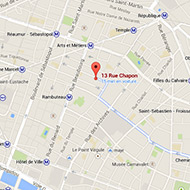Audrey MATT AUBERT
Les Parciels*
Isabelle Gounod Gallery is pleased to present this new solo exhibition by Audrey Matt Aubert. Still concerned by the forms and archetypes of architecture, the young French artist shows a new set of paintings, whose poetic and sensitive content reveals a new aspect of her work.
After several residencies and trips abroad, Audrey Matt Aubert returned to the silence of her studio, gathering the procession of her memories before her visit to the Pergamon Museum in Berlin and the discovery of a life-size reproduction of the Ishtar Gate became a new starting point. A question then had to be asked of the artist: in front of which kind of object was she standing and which reality is it referring to ? Between scenery and an object of science, these monumental reconstructions are as much a fantasy as a historical document, just like these authentic ruins that have been moved and rebuilt to be preserved. Conditions of demonstration which let the virtuality of a radical decontextualisation replace the vitality of their original site. The view that we take of these remains is therefore necessarily built by extraction, isolation and displacement. It is Babylon in a window, captive and timeless.
In turn, Audrey Matt Aubert seized these emblematic architectural motifs (the Ishtar gate, of course, but also that of the Milet market or the Pergamum altar) to extract them a second time from their environment and subject them to a new displacement: the painting. A "figurative "** painting for which the visible form is no longer subordinate to the model but which, because it is constructed by transgression of reality, is expressing an extreme condensation of the object to its sole presence. All references are abolished, all mimesis disappears. Only surfaces, matter and colour resist, like pure autonomous motifs of a figurative abstraction, whose multiple variations lead the artist to the threshold of the discernible, when the setting is falling apart.
Thibault Bissirier
* Neologism borrowed from André Breton (Manifesto of Surrealism – Poisson Soluble, 1924, ed. Kra).
** The concept of figural forged by Jean-François Lyotard in Discours, Figure (1971, ed. Klinckzieck) has been taken up by Gilles Deleuze in particular with regard to Francis Bacon's work: "Painting has neither a model to represent nor a story to tell (...) From then on, it has two possible paths to escape the figurative: towards pure form, by abstraction; or towards the pure figural, by extraction or isolation. If the painter is committed to the Figure, if he takes the second path, it will be to oppose the figural to the figurative. "(G. Deleuze, Logique de la sensation, 1996, Éditions de la Différence).


